#San Carlos Beach
Video
“ Purpetraitor (Chrysaora colorata) “ // © Pat Webster
Music: Thomas Newman - American Beauty Soundtrack
#San Carlos Beach#Monterey#California#United States#wildlife#marine life#jellyfish#4K#8K#fpv#reels#wanderlust#explore#follow#discover
2K notes
·
View notes
Text
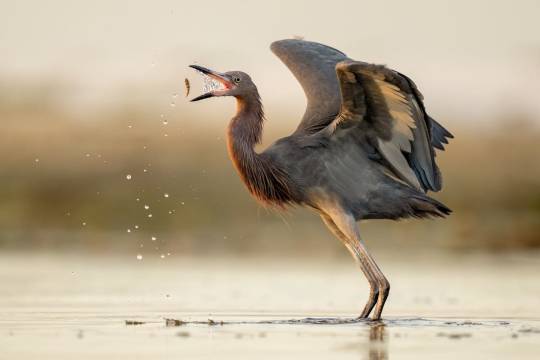
Reddish Egret
Location: San Carlos Bay – Bunche Beach Preserve, Fort Myers, Florida, USA
by Nathan Arnold
Audubon Photography Awards
#nathan arnold#photographer#audubon photography awards#reddish egret#egret#bird photography#san carlos bay#bunche beach preserve#fort myers#florida#united states#nature
35 notes
·
View notes
Text

Happy Father’s Day
0 notes
Text


That summer, River travelled to San Sequoia to meet April's family. He was quite nervous as they walked up the driveway to the large classic family home. It was the kind of house he had seen in tv shows depicting the average happy family - totally different from the house he grew up in down in Sulani. He worried about how he would come across to her parents.
'Don't worry, they'll love you!' said April as she escorted him inside. 'Dad can be a bit intense, but my Mom is nice to everyone. You'll be fine!'



Inside River shook April's father's hand and did his best to seem mature and put-together. Carlos was a very serious-looking man with a firm handshake. He invited River into his home and they all sat down in the loungeroom. It was such a 'normal' home, River thought. April's parents were like a classic tv mom-and-dad.

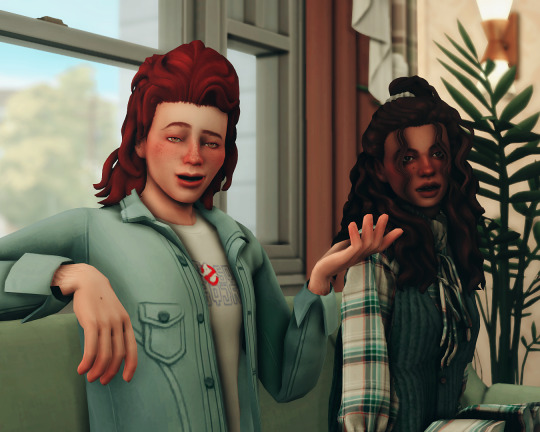
The interrogation began as April's parents asked River questions about himself - where he grew up and went to school, what he was studying at college. River tried to downplay his hippy roots, telling them he grew up near the beach, that he got a scholarship to college on merit, not just disadvantage.

When he told them that he was majoring in computer science, Carlos raised his eyebrows and said to River 'what are the career prospects in computers?'. River felt self-conscious, trying to justify his chosen pathway with more than just his personal love of computers.
'Daddy is a stockbroker,' explained April, staring down her father for quizzing her boyfriend.
'You should switch to economics, son,' said Carlos. 'With a science and maths brain, you'd do well. And there are great opportunities in the financial world - I could let you in on a few through my own contacts, you know.'
River was overwhelmed, but here was the father of his girlfriend offering to help him with his post-college career. Maybe he would change majors... maybe then he could have the kind of home and life that April had grown up with.


#sims 4 decades challenge#ts4 decades challenge#ts4 historical#sims 4 historical#sims 4 legacy#ts4 legacy#the langston legacy#1980s#river lenowski
165 notes
·
View notes
Text
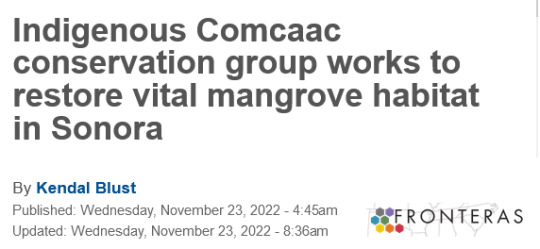

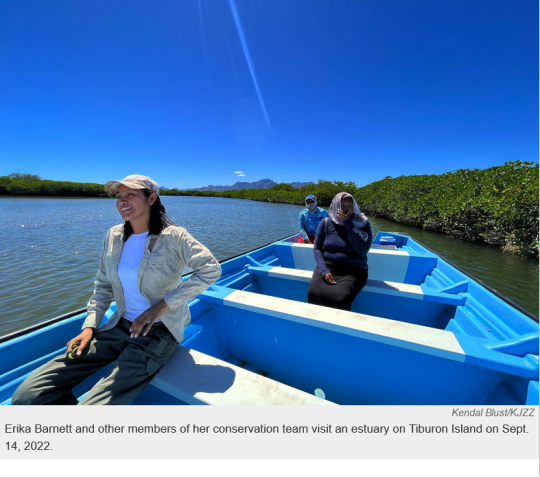
Eliseo Barnett begins the short trip from the little town of Punta Cheuca to the vast Isla de Tiburon -- the largest island in the Gulf of California and part of the Indigenous Comcaac territory. [...] Erika Barnett [...] watches dozens of herons, seagulls and small coastal birds bask in the shallow waters [...]. Beyond them stretches a dense mass of green leaves -- part of a huge mangrove estuary on Tiburon Island. It’s one of about a dozen interconnected stands in the Infiernillo Channel. A narrow stretch of ocean between the island and the Sonoran coast, entirely within Comcaac territory, the channel is known for its biodiversity and abundant seagrass meadows and is a protected wetland area.
Mangroves cover some 960 hectares — or nearly 2,400 acres — of the channel.
“It’s like a kindergarten,” Barnett said.
A local conservation leader, she compared the mangrove forest to a nursery, providing a protected habitat for important marine species like crabs, shrimp and fish, as well as birds and sea turtles. [...]
It all starts with collecting mangrove propagules — the long, slender green and brown stalks that grow from mangrove flowers — from the estuaries and beaches in the Infiernillo Channel. Walking along the beach on Tiburon Island, Erkia Barnett occasionally stoops down to pick up a stray mangrove propagule. She collects the ones that wash ashore. [...] “It occurred to us to pick them up and keep them” until they sprouted roots, she said. After propagating the plants, her family took them to the El Paraiso estuary nearby.
The conservation team’s current project is much the same — collecting, propagating and reforesting the plants — but on a larger scale. This year, they collected more than 6,000 plants from the channel. [...]

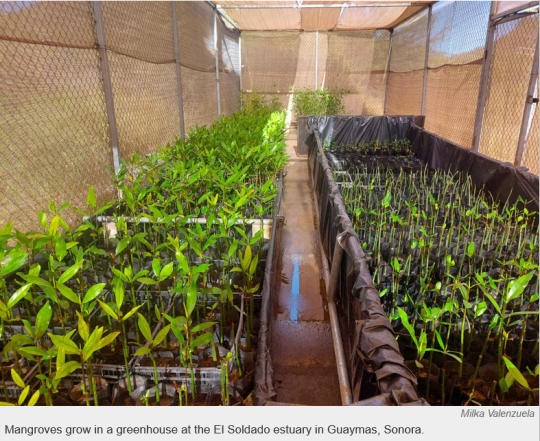
“Climate change is one of the biggest factors impacting the mangrove forests,” Barnett said. Increased heat, drought and rising sea levels are all taking a toll on the plants.
“It is the extreme of extremes, my goodness,” said ecologist Laura Smith Monti, with the Arizona-based Borderlands Restoration Network and The University of Arizona. “The mangroves stands in the Infiernillo Channel are the northernmost mangroves that occur on the West coast for sure.” [...]
And so far, the stands in the Infiernillo Channel are relatively healthy, likely because the protection afforded by the Comcaac community, Monti said. [...] The Comcaac have relied on these mangroves for thousands of years — using them as a source of food, medicine and building materials. [...] This year, after the plants grow large enough in the water-filled Coke bottles, they will be transplanted into soil for another six months or so — a new technique Barnett learned from one of the few other mangrove conservation teams in the region. [...] “It’s something relatively new,” said Milka Valenzuela, who has been running the mangrove reforestation project at the El Soldado estuary near the beach town of San Carlos since 2017. [...]
“I want to continue so that my children and my nieces and nephew might want to follow my example and continue taking care of the mangrove and the environment here in our territory,” [Barnett] said. “Because this ecosystem is important now just for our people, but for the world.”
---
Headline, images, captions, and text as published by: Kendal Blust. “Indigenous Comcaac conservation group works to restore vital mangrove habitat in Sonora.” Fronteras. 23 November 2022. [Bold emphasis and some paragraph contractions added by me.]
166 notes
·
View notes
Text
Tomdaya Timeline vol. 5
Links to vol. 1, vol. 2, vol. 3, vol. 4, and vol. 6
November 6, 2022
Tom and Z visited Petra. link link2
December 7, 2022
Tom allegedly spotted at In-N-Out in Northridge.
December 9 and 11, 2022
Multiple sightings of Tom and Z together in California.
December 11, 2022
Tom and Z attended RDJ’s Netflix documentary, “Sr”, screening event in LA. link Tom and Z spotted at the Sunset Tower Hotel attending RDJ’s after-party. link2
Z and Tom got their nails done by her manicurist. link3
December 14, 2022
Tom with Z at her former school, Oakland School of the Arts (OSA), for an impromptu master class. link link2 link3 link4 link5 link6 link7 link8 link9 link10 link11 link12 link13 link14 link15 link16 link17 link18 link19 link20 link21 link22 link23 link24
They were also spotted at Batch & Brine in Lafayette, CA. link link2 link3
December 15, 2022
Tom and Z at the Academy of Sciences in San Francisco. link link2 link3 link4 link5
Tom allegedly called Z his butterfly. link
December 16, 2022
Tom and Z in San Francisco. link While there, they visited the Golden Gate Bridge. link2
They were also spotted eating ice cream in Sausalito. link
December 18, 2022
Tom and Z allegedly paid for customers in line behind them at Starbucks. link
December 30, 2022
Tom spotted at Heathrow (below) and arriving at LAX (link).
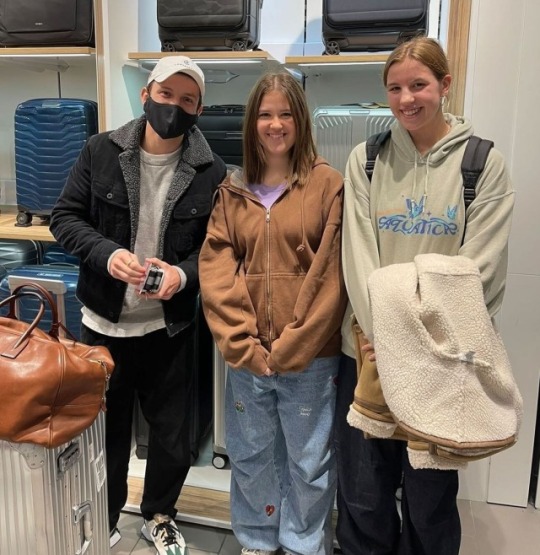
January 2023 Month-Long Caribbean TomdayaMoon
Alleged Tomdaya Caribbean destinations include Turks and Caicos, St. Vincent and the Grenadines, St Lucia (confirmed -- see photo below), and Antigua and Barbuda. link

Tom and Z in St. Lucia
January 1 - 2, 2023
Tom and Z were allegedly spotted on a flight from LAX to MIA (Miami). link
Tom and Z allegedly spotted having brunch on Brickell Key (Miami). link
January 3, 2023
Tom and Z allegedly spotted at the Amanyara Resort on Turks and Caicos. link
January 4, 2023
Z posted the story below from the Caribbean.

Somewhere in the Caribbean
January 5, 2023
Tom and Z spotted at the beach in the Caribbean. link link2
January 11, 2023
Tom and Z allegedly spotted in St. Vincent and the Grenadines. link
January 22, 2023
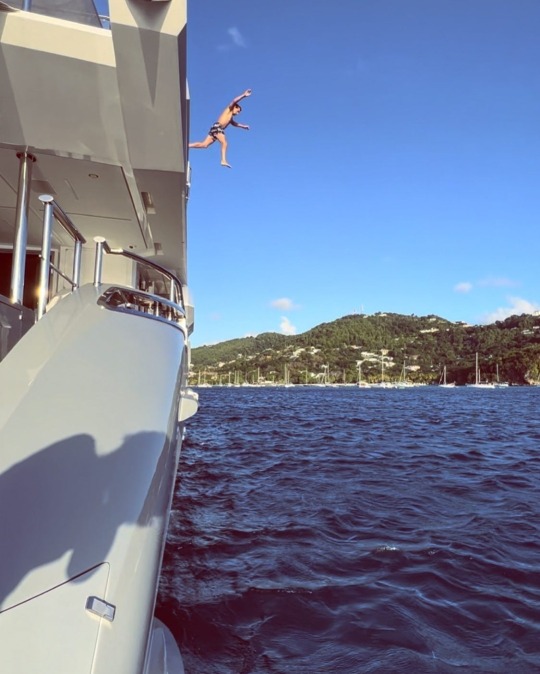
According to a credible source, he met Tom and Z on a boat in St. Vincent and the Grenadines. link
January 23, 2023
Tom and Z were spotted hiking in St. Lucia. link link2
February 1, 2023
An airport employee allegedly met Tom and Z in Antigua and Barbuda. link
February 2-4, 2023
After a month-long baecation, Z returned to LA and Tom returned to London. link
Monaco
February 2023
Z was papped working in Menton, France on February 14, and photographed with a fan in Monaco on February 15. Tom and Z were spotted at the airport together in Nice, France on February 15. link link2 They were both spotted dining together in Monte-Carlo, Monaco. link3
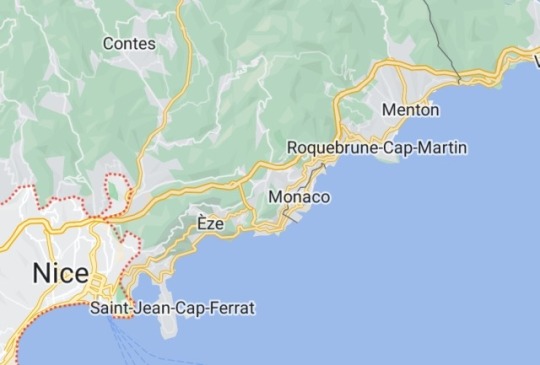
London
March 2023
Tom and Z out and about in Kingston. link
March 8, 2023
Tom and Z spotted buying hot beverages while on a “family walk” in Richmond Park. link Dom confirmed the “family walk” link2 , and Tessa and Noon accompanied them. link3
March 11, 2023
Tom and Z were spotted holding hands while walking in Richmond. link They were also spotted having lunch while they were there. link2
March 11, 2023
Tom and Z were spotted at Chiltern Firehouse in London. link
March 12, 2023
Tom and Z spotted at Richmond Park again today along with Tom’s parents, and their dogs Tessa and Noon. link link2 link3 link4
Z spotted watching Tom play padel. link
March 15, 2023
Tom and Z photographed grocery shopping at Waitrose. link link2 link3
March 18, 2023
A London-based manicurist made a housecall to do Z’s nails. In the manicurist’s Instagram stories, Z is wearing a TH, ZH, or T/Z H/C signet ring and the Loewe shirt Tom wore to the Louvre. link
March 21, 2023
Tom and Z spotted grabbing coffee. link
Tom and Z along with Tuwaine and Noon were photographed taking a walk. link link2 link3
March 25-26, 2023
Tom and Z spotted shopping at John Lewis & Partners. link
March 27, 2023
Tom and Z dined at Jamavar, a Michelin Star restaurant link and they were spotted out and about on New Bond Street in London. link2
March 28, 2023
Tom and Z were shopping for antiques, and then spotted at a play and cuddling at a nearby bar/restaurant. link link2 link3 link4 link5
Mumbai
Tom and Z in Mumbai. link
March 31, 2023
Tom and Zendaya arrive in Mumbai for the Nita Mukesh Ambani Cultural Centre (NMACC) grand opening. link link2 link3
April 1, 2023
Tom and Z yachting in Mumbai. link link2 link3 link4 link5 link6 link7
TZ sightseeing in Mumbai. link
Zendaya and Tom at the NMACC. link link2 link3 link4 link5 link6 link7 link8
TZ leaving the NMACC. link link2
April 2, 2023
Tom and Z spotted arriving at their hotel in Mumbia after brunch with the Ambanis. link
TZ spotted leaving their hotel in Mumbia. link
Tom and Z were holding hands while arriving at the NMACC. link
TZ at the NMACC and out and about in Mumbai. link link2 link3 link4 link5 link6
Tom and Z sighting at the Mumbai airport. link
April 3, 2023
Tom and Z departed Mumbai. link
Noon stayed with Tom’s parents while TZ were in Mumbai. link
London
April 7, 2023
Tom and Z spotted walking in Richmond Park. link
Zendaya and Tom explored Hampton Court Palace after hours today. link link2 link3
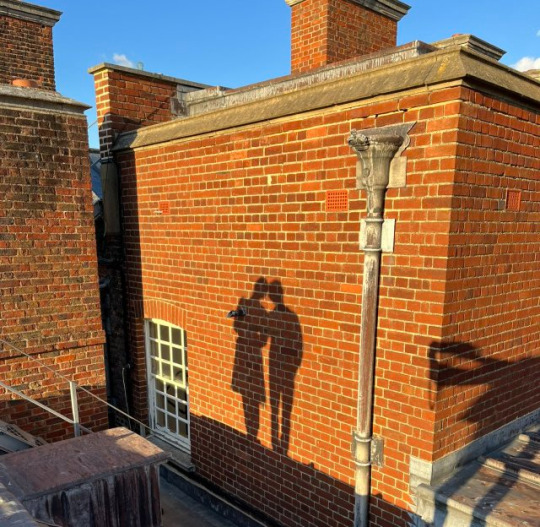
Hampton Court Palace
April 9, 2023
Tom picked up a chocolate hazelnut frappe for Z on his way home from golfing. link
April 13, 2023
Tom and Z spotted at Windsor Castle. link
April 14, 2023
TZ spotted by a fan in Kingston. link
April 15, 2023
Tom and Z were spotted by a fans in Kingston. link link2 link3 link4 link5
April 17, 2023
TZ were spotted getting coffee this morning. link
Las Vegas

Tom and Z in Las Vegas
April 26, 2023
Zendaya and Tom at an Usher concert in Las Vegas. link link2 link3 link4 link5 link6 link7 link8 (Tom wraps his arms around Z) link9 link10 link11 link12 link13 link14 link15 (Tom holding Z from behind while dancing together) link16 link17 link18 link19 link20 link21 link22
Z posted a story ft. Tom at the Usher concert in Las Vegas. link

May 1, 2023
Tom and Z at a Thai restaurant in Malibu. link link2 link3 link4 link5
May 4, 2023
Zendaya and Tom in San Francisco at the Golden State Warriors game. link link2 link3 link4 link5 link6 link7 link8 link9 link10 (holding hands) link11 link12 link13 (Z shielding Tom from the camera) link14 link15 link16 (Tom caressing Z’s arm) link17 link18 link19 link20 link21 link22 link23 link24
May 5 or 6, 2023
TZ returned to London. link
May 13, 2023
Tom and Z allegedly saw Guardians of the Galazy Vol. 3 at a Kingston cinema. link
May 13 or 14, 2023
TZ spotted in Notting Hill. link
Venice
May 15, 2023
Tom with Z in Venice. link link2
Tom and Z were spotted hugging and kissing, on a boat, and with Noon in Venice and nearby Murano. link link2 link3 link4 link5 link6 link7 link8 link9 link10
May 16, 2023
Tom and Z allegedly spotted having lunch in Venice at the Gritti Palace Hotel. link
TZ photographed leaving The Gritti Palace Hotel in Venice. link
TZ out and about in Venice. link link2 link3 link4
May 17, 2023
Tom and Z departed Venice. link link2 link3 link4
May 31, 2023
During an interview, Tom called Z a saint for putting up with his hair while he was filming TCR. link
According to Sunrise, Tom wants to spend a bit more time away from the spotlight with his mate and his girlfriend, Zendaya. link
June 2023
Tom liked a Most Beautiful Woman in the World fan post of Z. link
June 1, 2023, Tom’s birthday and TCR red carpet premiere
TZ shared some Caribbean vacation (tomdayamoon) memories on Instagram. link link2 link3
Z liked and commented on a video Nikki shared of baby Tom. link
Z also posted the poster for TCR to her story. link
During a TCR interview, the interviewer asked Tom, “What is the most important experience in your life that has shaped you into the person you are today, if you could say one?” Tom responded, “I think the most important experience I would like to keep private because it has to do with someone very special.” link
June 4, 2023
While answering BuzzFeed’s 30 questions, Tom said, “I’m locked up, so I’m happy and in love.” link During the interview, he also mentioned Z was his childhood crush, and that “they” want to go back to his dream vacation spot -- a beach location they visited this year. link2
During Tom’s UNILAD interview, he confirmed tomdaya 1.0. link
June 8, 2023
During a podcast, Tom mentioned he’s lucky he has Z in his life. link
June 9, 2023
Z reposted Tom’s TCR post to her story. link
June 14, 2023
Tom and Z attended her Challengers costar’s play in London, and exited the theater holding hands. link link2
June 16, 2023
Tom and Z photographed on an intimate walk in a London park. link link2 link3 link4 link5
June 24, 2023
TZ spotted at a local golf resort. link link2
Z had her nails manicured at Tom’s house. link
June 27, 2023
Zendaya and Tom at the Beyonce Renaissance World Tour in Warsaw, Poland. Tom is wearing Z’s leather jacket.
link link2 link3 link4 link5 link6 link7 link8 link9 link10 link11 link12 link13 link14 link15 link16 link17 link18 link19 link20 link21 link22 link23 link24 link25 link26 link27 link28
TZ serenading each other to Love On Top at Beyonce’s concert. link link2 link3 link4
TZ lovingly looking into one another’s eyes and Z caressing Tom’s face during Beyonce’s Love on Top performance. link
June 28, 2023
TZ returned to London. link
397 notes
·
View notes
Text
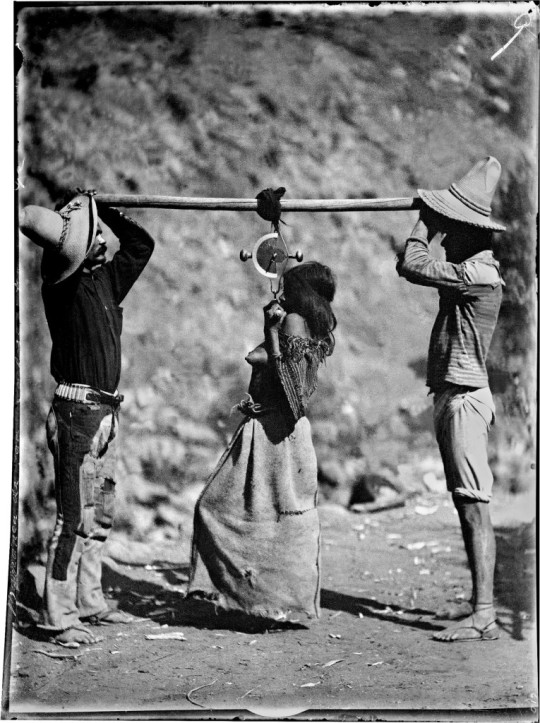
Neo-Griot
Kalamu ya Salaam's information blog
HISTORY: Indians, Slaves, and Mass Murder: The Hidden History
Indians, Slaves, and
Mass Murder:
The Hidden History
by Peter Nabokov
The Other Slavery:
The Uncovered Story of
Indian Enslavement in America
by Andrés Reséndez
Houghton Mifflin Harcourt, 431 pp., $30.00
An American Genocide:
The United States and the
California Indian Catastrophe, 1846–1873
by Benjamin Madley
Yale University Press, 692 pp., $38.00
Carl Lumholtz: Tarahumara Woman Being Weighed, Barranca de San Carlos (Sinforosa), Chihuahua, 1892; from Among Unknown Tribes: Rediscovering the Photographs of Explorer Carl Lumholtz. The book includes essays by Bill Broyles, Ann Christine Eek, and others, and is published by the University of Texas Press.
1.
The European market in African slaves, which opened with a cargo of Mauritian blacks unloaded in Portugal in 1441, and the explorer Christopher Columbus, born in Genoa ten years later, were closely linked. The ensuing Age of Discovery, with its expansions of empires and exploitations of New World natural resources, was accompanied by the seizure and forced labor of human beings, starting with Native Americans.
Appraising that commercial opportunity came naturally to an entrepreneur like Columbus, as did his sponsors’ pressure on him to find precious metals and his religion’s contradictory concerns both to protect and convert heathens. On the day after Columbus landed in 1492 on an island in the present-day Bahamas and saw its Taíno islanders, he wrote that “with fifty men they could all be subjected and made to do all that one wished.” Soon the African trade was changing life in Spain; within another hundred years most urban families owned one or more black servants, over 7 percent of Seville was black, and a new social grouping of mixed-race mulattos joined the lower rungs of a color-coded social ladder.
Columbus liked the “affectionate and without malice” Arawakan-speaking Taíno natives. He found the men tall, handsome, and good farmers, the women comely, near naked, and apparently available. In exchange for glass beads, brass hawk bells, and silly red caps, the seamen received cotton thread, parrots, and food from native gardens. Fresh fish and fruits were abundant. Glints in the ornaments worn by natives promised gold, and they presumably knew where to find more. Aside from one flare-up, there were no serious hostilities. Columbus returned to Barcelona with six Taíno natives who were paraded as curiosities, not chattel, before King Ferdinand and Queen Isabella.
The following year, Columbus led seventeen ships that dropped 1,500 prospective settlers on Caribbean beaches. As they stayed on, relations with local Indians degenerated. What was soon imposed was “the other slavery” that the University of California, Davis, historian Andrés Reséndez discusses in his synthesis of the last half-century of scholarship on American Indian enslavement. First came the demand for miners to dig for gold. The easy-going Taínos were transformed into gold-panners working under Spanish overseers.
The Spaniards also exploited the forms of human bondage that already existed on the islands. The Caribs of the Lesser Antilles, a more aggressive tribe, regularly raided the Taínos, allegedly eating the men but keeping the women and children as retainers. A similar discrimination based on age and gender would prevail throughout the next four centuries of Indian-on-Indian servitude. As Bonnie Martin and James Brooks put it in their anthology, Linking the Histories of Slavery: North America and Its Borderlands:
North America was a vast, pulsing map of trading, raiding, and resettling. Whether the systems were pre- or postcontact indigenous, European colonial, or US national, they grew into complex cultural matrices in which the economic wealth and social power created using slavery proved indivisible. Indigenous and Euro-American slave systems evolved and innovated in response to each other.*
Taínos who resisted the Spanish were set upon by dogs, disemboweled by swords, burned at stakes, trampled by horses—atrocities “to which no chronicle could ever do justice,” wrote Friar Bartolomé de las Casas, a crusader for Indian rights, in 1542. Against the Caribs the Spaniards had a tougher time, fighting pitched battles but capturing hundreds of slaves as well. Columbus sailed home from his second voyage with over a thousand captives bound for slave auctions in Cádiz (many died en route, their bodies tossed overboard). He envisioned a future market for New World gold, spices, cotton, and “as many slaves as Their Majesties order to make, from among those who are idolators,” whose sales might underwrite subsequent expeditions.
Thus did the discoverer of the New World become its first transatlantic human trafficker—a sideline pursued by most New World conquistadors until, in the mid-seventeenth century, Spain officially opposed slavery. And Columbus’s vision of a “reverse middle passage” crumbled when Spanish customers preferred African domestics. Indians were more expensive to acquire, insufficiently docile, harder to train, unreliable over the years, and susceptible to homesickness, seasickness, and European diseases. Other obstacles included misgivings by the church and royal authorities, which may explain Columbus’s emphasis on “idolators” like the Caribs, whose status as “enemies” and cannibals made them more legally eligible for enslavement.
Indians suffered from overwork in the gold beds, as well as foreign pathogens against which they had no antibodies, and from famine as a result of overhunting and underfarming. Within two generations the native Caribbean population faced a “cataclysmic decline.” On the island of Hispaniola alone, of its estimated 300,000 indigenous population, only 11,000 Taínos remained alive by 1517. Within ten more years, six hundred or so villages were empty.
But even as the Caribbean was ethnically cleansed of its original inhabitants, a case of bad conscience struck Iberia. It had its origins in the ambivalence of King Ferdinand and Queen Isabella over how to treat Indians. In the spring of 1495, only four days after the royals advised their bishop in charge of foreign affairs that slaves “would be more easily sold in Andalusia than in other parts,” they ordered a halt to all human enslavement until the church informed them “whether we can sell them or not.” Outrage was more overt in the polemics of Las Casas, who had emigrated to the islands in 1502. He had owned slaves and then renounced the practice in 1515. After taking his vows as a Dominican priest, he helped to push the antislavery New Laws of the Indies through the Spanish legal system in 1542.
Slaving interests used a succession of verbal strategies for justifying and retaining unfree Indian labor. As early as 1503 tribes designated as “cannibals” became fair game, as were Indian prisoners seized in “just wars.” Hereafter labeled esclavos de guerra (war slaves), their cheeks bore a branded “G.” Automatic servitude also awaited any hapless Indians, known as esclavos de rescate (ransomed slaves), whom Spanish slavers had freed from other Indians who had already enslaved them; the letter “R” was seared into their faces.
In 1502 Hispanola’s new governor, Nicolás de Ovando, made use of an old feudal practice for ensuring control over workers’ bodies. To retain native miners but check rampant cruelty, Ovando bestowed on prominent colonizers land grants (encomiendas) that included rights to tribute and labor from Indians already residing there. Although still vassals, they remained nominally free from “ownership.” They could reside in their own villages, were theoretically protected from sexual predation and secondary selling, and were supposed to receive religious instruction and token compensation of a gold peso a year—benefits that were often ignored. Over the next two centuries the encomienda system and other local forms of unfree labor were used to create a virtually enslaved Indian workforce throughout Mexico, Florida, the American Southwest, down the South American coast, and over to the Philippines.
The story of Native American enslavement told by Reséndez becomes confused by the convoluted interplay of indigenous and imported systems of human servitude. Despite his claim of uncovering “the other slavery,” when speaking of the forms of bondage imposed on Indians he fails to acknowledge that there was no monolithic institution akin to the “peculiar” transatlantic one that would become identified with the American South, which imported Africans auctioned as commodities. Even the distinction some scholars draw between such “slave societies” and “societies with slaves” (depending on whether slave labor was essential or not to the general economy) only partially applies to the highly complex, deeply local situations of enslaved American Indians. For these blended a dizzying variety of customary practices with colonial systems for maintaining a compulsory native workforce. If Reséndez is claiming to encompass the full tragedy of Indian slavery “across North America,” he does not distinguish among the different colonial systems of Indian servitude—enabled by Indian allies of the colonizers—that existed under English, French, and Dutch regimes.
During the seventeenth century, as some Spaniards continued to raise the question of the morality of slavery, silver mines opened in northern Mexico, and the demand for Indian manpower increased. This boom would require more workers than the Caribbean gold fields and last far longer. Now the physical effort turned from surface panning or shallow trenching to sinking shafts hundreds of feet into the ground. More profitable than gold, silver was also more grueling to extract. Miners dug, loaded, and hauled rocks in near darkness for days at a time. Around present-day Zacatecas, entire mountains were made of the gray-black ore.
To meet the growing labor demand, Spanish and Indian slaving expanded out of the American Southwest, sending Pueblo and Comanche slaves to the mines, and seizing slaves from the defiant Chichimec of northern Mexico during particularly violent campaigns between the 1540s and the 1580s. From the beginning of the sixteenth century to the first decade of the nineteenth, twelve times as much silver was extracted from over four hundred mines scattered throughout Mexico as was gold during the entire California Gold Rush.
At Parral, a silver-mining center in southern Chihuahua and in 1640 the largest town north of the Tropic of Cancer, over seven thousand workers descended into the shafts every day—most of them enslaved natives from as far off as New Mexico, which soon became “little more than a supply center for Parral.” After the state-directed system for forcibly drafting Indian labor for the Latin American silver mines, known as the mita, was instituted in 1573, it remained in operation for 250 years and drew an average of ten thousand Indians a year from over two hundred indigenous communities.
As Reséndez shifts his narrative to the Mexican mainland, however, one is prompted to ask another question of an author who claims to have “uncovered” the panoramic range of Indian slavery. Shouldn’t we know more of the history of those Indian-on-Indian slavery systems that Columbus witnessed and that became essential for delivering workers to Mexican mines, New Mexican households, or their own native villages? Throughout the pre-Columbian Americas, underage and female captives from intertribal warfare were routinely turned into domestic workers who performed menial tasks. Through recapture or ransom payment some were repatriated, while many remained indentured their entire lives. But a number were absorbed into their host settlement through forms of fictive kinship, such as ceremonial adoption or most commonly through intermarriage.
Among the eleventh-century mound-building Indian cultures of the Mississippi Bottoms, such war prisoners made up a serf-like underclass. This civilization collapsed in the thirteenth century and the succeeding tribes we know as Choctaw, Cherokee, Creek, and others perpetuated the practice of serfdom; Cherokee war parties added to each town’s stock of atsi nahsa’i, or “one who is owned.” The custom continued across indigenous America, with child-bearing women and prepubescent males generally preferred. Their husbands and fathers were more commonly killed. Reséndez hardly mentions the subsequent participation of those same tribes in the white man’s race-based “peculiar institution.” They bought and sold African-American slaves to work their Indian-owned plantations. Once the Civil War broke out there was a painfully divisive splitting of southern Indian nations into Confederate and Union allies.
As with Carib predation upon the Taíno, it was not uncommon for stronger tribes to focus on perennial victims. In the Southeast, the Chickasaw regularly took slaves from the Choctaw; in the Great Basin, the Utes stole women and children from the Paiute (and then traded them to Mormon households that were happy to pay for them); in California, the northeastern Modoc regularly preyed upon nearby Atsugewi, while the Colorado River–dwelling Mojave routinely raided the local Chemehuevi. These relationships between prey and predator might extend over generations. Only among the hierarchical social orders of the northwest coast, apparently, were slaves traditionally treated more like commodities, to be purchased, traded, or given as gifts.
Indirectly, the Spanish helped to instigate the next upsurge in human trafficking across the American West. Their horses—bred in northern New Mexico, then rustled or traded northward after the late seventeenth century—made possible an equestrian revolution across the plains. In short order the relationships between a few dozen Indian tribes shifted dramatically, as the pedestrian hunter-and-gatherer peoples were transformed by horses into fast-moving nomads who became dependent on buffalo and preyed on their neighbors. In white American popular culture the new-born horse cultures would be presented as the war bonnet–wearing, teepee-dwelling, war-whooping stereotypes of Wild West shows and movie screens. Among them were the Comanches of the southern plains and the Utes of the Great Basin borderlands.
By the mid-eighteenth century, the Comanche military machine had put a damper on Spanish expansionism. Their cavalry regiments of five hundred or more disciplined horsemen undertook eight-hundred-mile journeys northward as far as the Arkansas River and southward to within a few hundred miles of Mexico City. The slaves they plucked from Apaches, Pueblos, and Navajos became their prime currency in business deals with Mexicans, New Mexicans, and Americans. At impromptu auctions and established crossroads, Native American, Mexican, and Anglo slaves were being sold, some undergoing a succession of new masters. Until the US government conquered them, the Comanches held sway over a quarter-million square miles of the American and Mexican borderlands.
Reséndez argues for continuities in this inhuman traffic right down to the present day. But his abrupt transition to the present after the defeat of the Comanches only reinforces our sense that his effort has been overly ambitious and weakly conceived, as if achieving the promised synthesis for so complex and persistent a topic has simply (and understandably) overwhelmed him. His treatment of the multinational practices of Colonial-period slavery is spotty, and the ubiquitous traditions of native-on-native enslavement seem soft-pedaled.
Reséndez loosely estimates that between some 2.5 to five million Indians were trapped in this “other slavery,” in which overwork and physical abuse doubtlessly contributed to the drop of 90 percent in the North American Indian population between Columbus’s day and 1900. But somehow little of all that torment comes across vividly in The Other Slavery. We are told that Navajos called the 1860s, when their entire tribe was hounded for incarceration in southern New Mexico, “the Fearing Time.” Aside from that hint of the collective emotional impact from the victims’ side, we get few testimonies that reflect the anxiety and terror behind Reséndez’s many summaries of human suffering, tribal dislocations, furtive lives on the run, and birthrights lost forever.
A more convincing sense of the racial discrimination and hatred that bolstered and perpetuated the slavery systems discussed in Reséndez’s book comes from even a melodramatic film like John Ford’s The Searchers (1956), while the terrors of surviving in the late-eighteenth-century West amid roving bands of merciless slave raiders are better evoked in Cormac McCarthy’s Grand Guignol masterpiece Blood Meridian(1985). Reading Reséndez’s account one hopes in vain for something similar to Rebecca West’s quiet comment in Black Lamb and Grey Falcon (1941), her chronicle of Yugoslavian multiethnic animosities: “It is sometimes very hard to tell the difference between history and the smell of a skunk.”
2.
Indian slavery becomes a contributing factor in An American Genocide, the UCLAhistorian Benjamin Madley’s extensive argument that genocide is the only appropriate term for what happened to native peoples in north-central California between 1846 and 1873. For American Indians, slavery in the New World took many forms that persevered over four centuries while changing according to local conditions, global pressures, and maneuvers to evade abolitionist crusades. Genocide—the elimination of entire groups—might seem easier to evaluate. Yet which historical episodes of mass Indian murder qualify as genocide has become a matter of debate.
Madley shies away from the hyperbolic accusations of genocide or holocaust often made in simplistic discussions of American Indian history. The definition that he invokes with prosecutorial ferocity is the one produced by the United Nations Genocide Convention of 1948, which defines genocide as, first, demonstrating an intent to destroy, “in whole or in part, a national, ethnic, racial or religious group,” and, second, committing any of the following acts: killing members of a group; causing them serious bodily or mental harm; inflicting conditions that are intended to cause their destruction in whole or in part; imposing measures to prevent births within the group; and transferring children of the group to another group. Whereas the large unspecified “group” referred to in this post–World War II statement was, of course, defined by the Nazis, Madley’s is smaller and, even then, it is composed of many hundreds of indigenous units, each an autonomous, small-scale cultural world that was decimated or destroyed.
Madley has documented his charge of genocide by years of scrolling through local newspapers, histories, personal diaries, memoirs, and official letters and reports. These revealed what many indigenous groups endured at the hands of US military campaigns, state militia expeditions, impromptu small-town posses, and gold miners, as well as ordinary citizens who hunted natives on weekends. Most western historians and demographers could agree that genocidal behavior toward a North American Indian population occurred during the nineteenth century. But Madley has concentrated on the killing in California during the bloody years between 1846 and 1873.
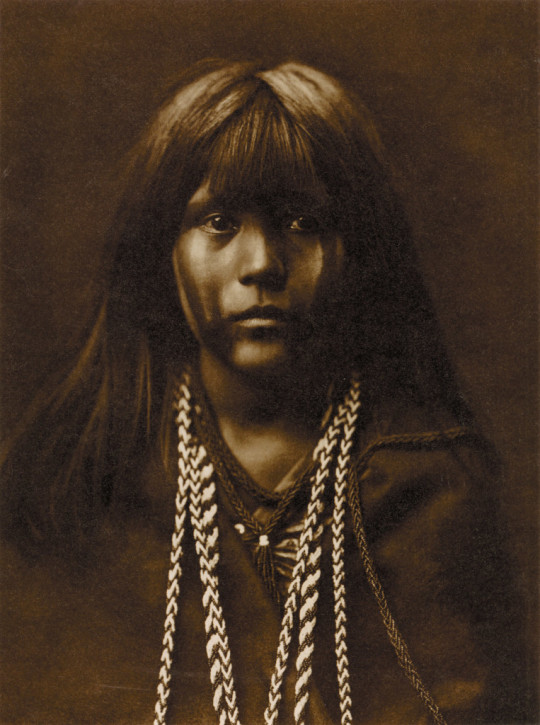
Edward S. Curtis: Mosa—Mohave, 1903/1907; from Edward S. Curtis: One Hundred Masterworks. The book is by Christopher Cardozo, with contributions by A. D. Coleman, Louise Erdrich, and others. It is published by Delmonico/Prestel and the Foundation for the Exhibition of Photography.
The factors that led to this American tragedy are worth recalling. Many Indian communities had already been defeated in their resistance to servitude during the Spanish Mission and Mexican Rancho years. The United States victory over Mexico in early 1848 opened the way to the last great American land rush. Until California became the nation’s thirty-first state in 1850, there were two years of lawlessness. The Anglo-American settlers whose wagons began rolling into the region carried anti-Indian attitudes imported from colonial times. The discovery of gold in early 1848 multiplied that immigration and aggressive settler colonialism. There was pervasive racism toward the state’s diverse and generally peaceful native population. They were denigrated as animal-like “Diggers”—a pejorative term based on their food-gathering customs. Political, military, journalistic, and civic leaders favored creating a de facto open season on its native peoples.
When the state’s first legislature convened, it passed a number of orders that, according to Madley, “largely shut Indians out of participation in and protection by the state legal system” and granted “impunity to those who attacked them.” The legislature funded, with $1.51 million, state vigilantism coupled with exhortations from top officials, including two state governors, to war against Native Americans. Near the beginning of this campaign, California’s first governor, Peter Burnett, pledged that “a war of extermination will continue to be waged…until the Indian race becomes extinct.”
At the time of first contact with whites, the native California population amounted to some 350,000, perhaps the densest concentration of Indians in the country. But they were divided into at least sixty major tribes that, in turn, were made up of scores of small, independent, autonomous villages that spoke upward of a hundred separate languages. After the epidemics, mission programs, land losses, and peonage of the Spanish period, about 150,000 Indians remained on the eve of the US takeover. By 1870 the number of California Indians had been cut to under 30,000, a population loss that would continue until it bottomed out at under 17,000 by the turn of the century.
When gold was struck near present-day Sacramento in January 1848, Indians were occupying some of the most desirable natural environments in North America. The size of these Indian groups ranged widely. The proximity of so many autonomous villages made bi- or even trilingualism not uncommon. But especially in the north-central region—with its abundant acorn groves, salmon-rich rivers, valleys plentiful in fruits, roots, and seeds, foothills teeming with game, plentiful marine life, wildfowl and associated plants along the sea coast and wetlands—their small, self-governing and self-sufficient villagers could thrive in their homelands. However, the combination of Spanish and American invasions would cost the Indians and their fragile ecologies dearly. Meadows bearing life-giving nutritious seeds and roots were put to the torch for conversion into agricultural fields and cattle pastures, streams were poisoned by the sludge from mining, and forests were cut for lumber.
To characterize these fairly self-contained worlds, the dean of California Indian studies, anthropologist Alfred L. Kroeber, coined the term “tribelet.” But when it came to describing the sufferings of these California tribelets during the Gold Rush, Kroeber wrote dismissively of their “little history of pitiful events,” which, as an ethnographer drawn to “millennial sweeps and grand contours,” he felt unable to comment upon.
That did not stop one of his colleagues, the anthropologist Robert Heizer, from doing so. Heizer’s revelatory They Were Only Diggers (1974), along with his other anthologies, compiled newspaper clippings and reports on the myriad killings and other brutalities experienced by the region’s Indians. Together with a state demographer, Sherburne Cooke, he began documenting the unpublicized story of the California Indian catastrophe. Now Benjamin Madley, building upon the ethnohistorical work of Heizer and Cooke, has delved more systematically into the outrages of the period.
His chronicle opens with accounts by Thomas Martin and Thomas Breckenridge, members of John C. Frémont’s early expedition, which invaded what was still Mexican-held territory. In April 1846, along the Sacramento River near the present-day city of Redding, Frémont’s troops encountered a large group of local Wintu Indians. With the command “to ask no quarter and to give none,” his troops encircled the Indians and began firing at everyone in sight. Breckenridge wrote: “Some escaped but as near as I could learn from those that were engaged in the butchery, I can’t call it anything else, there was from 120 to 150 Indians killed that day.” Martin estimated that “in less than 3 hours we had killed over 175 of them.” A third eyewitness account found by Madley raised that estimate to between six hundred and seven hundred dead on land, not counting those, possibly an additional three hundred, slaughtered in the river. “The Sacramento River Massacre,” he writes, may have been one of the least-reported mass killings in US history, and “was the prelude to hundreds of similar massacres.”
So begins Madley’s calm, somber indictment. One after another he describes the cultures and the histories of tribes that were victimized, and he profiles the victimizers. Many of the atrocities were committed not only by US soldiers and their auxiliaries but also by motley companies of militiamen that murdered young and old, male and female indiscriminately—and often with an undisguised glee that comes through in Madley’s abundant selection of quotes.
Rape was rampant, and natives were intentionally starved, tortured, and whipped. Under the new California Legislature’s Government and Protection of the Indians Act of 1850, any nonworking, publicly drunk, or orphaned and underage Indians could become commodities in an unfree labor system that was tantamount to slave auctions. The act’s impact on the young meant that ten years after its passage, thousands of California Indian children were serving as unpaid “apprentices” in white households.
For over a quarter-century, Madley shows how the region became a quilt of many killing fields. Of the estimated 80 percent decline in the California Indian population during these years, around 40 percent has been attributed to outright “extermination killings” alone. Yet each of these tribes and tribelets functioned as an independent cultural world. Each was knit together by strands of kinship and deep attachments to place, as well as oral traditions about both that were passed on from generation to generation. Strewn across California were not only human bodies, but entire worldviews.
At the start of the Gold Rush, the Yuki Indians who lived at the heart of the region had well over three thousand members; they were reduced to less than two hundred by its end. The same decline occurred among the Tolowa Indians to the northwest, while the Yahi people were practically wiped out altogether.
In the hateful rhetoric of many nineteenth-century military, religious, and bureaucratic hard-liners quoted by Madley, the word “extermination” was often used. Yet this outcome was considered no great tragedy for an entire people who were uniformly and irredeemably defined as savage and subhuman.
Madley’s nearly two hundred pages of appendices are the most complete incident-by-incident tally ever compiled of Indian lives lost during this terrible period. Asking for names would have been impossible; instead we get numbers of deceased and places where they perished—one or two with brains smashed on rocks on a particular day over here, thirty to a hundred shot to death and left floating in a river over there. This scrupulously detailed epilogue is the equivalent of a memorial wall that we are visiting for the first time.
#Indians#Slaves#Mass Murder:#The Hidden History#black lives matter#Black Indians#Neo-Griot#Kalamu ya Salaam#Black Global History
3 notes
·
View notes
Text
About The Princess Royal's and Vice Admiral Sir Tim Laurence visit to the Falklands :
Day One
Her Royal Highness, accompanied by Sir Tim Laurence, arrived at the Falkland Islands, where they were welcomed by the Governor of Falkland Islands (Her Excellency Mrs. Alison Blake).
Day Two
The Princess Royal met Members of the Legislative Assembly, before laying a wreath at the 1982 Liberation Memorial in Port Stanley.

Her Royal Highness then visited the Primary and Secondary Schools in Port Stanley to hear about the education facilities on the Islands.
As Patron of City & Guilds, The Princess then visited the Falkland College, an accredited City & Guilds site.



In the afternoon, Her Royal Highness then visited the Falklands Islands and MOD Demining teams to receive a brief on how the Islands were successfully demined following 1982, before visiting a Magellanic Penguin colony under the care of the Falkland Conservation to see the work that has been possible due to the successful demining.

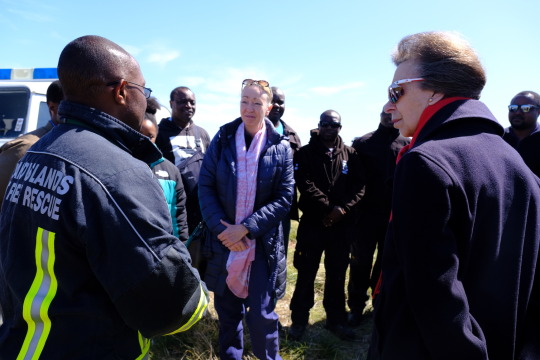

At Liberty Lodge, The Princess then met veterans of the 1982 Conflict and later attended a reception hosted by the Falklands Islands Government for the Island community.




Day Three
Her Royal Highness attended the Mount Pleasant Community Open day, touring civilian and military stands and meeting military personnel from Regiments and corps of which she is Colonel.


Following this, The Princess, accompanied by Sir Tim Laurence, visited Goose Green for the Falklands Islands Multicultural Day.

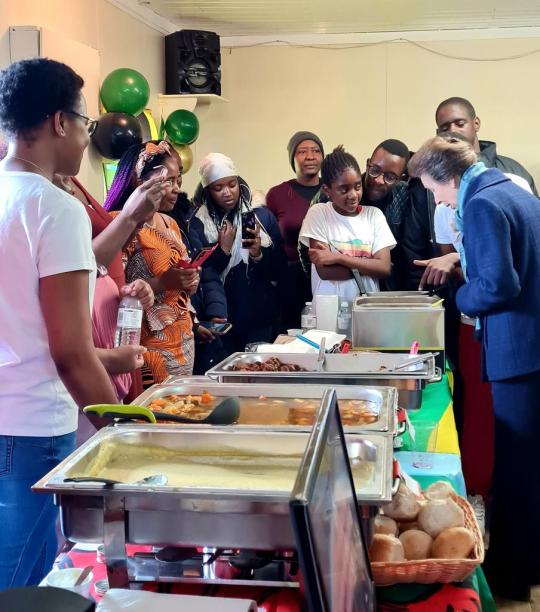
On route to Goose Green Her Royal Highness visited the Col H Jones and 2 Para Memorials and the Argentine Military Cemetery near Darwin.

In the afternoon The Princess visited San Carlos to pay respects at the Blue Beach military cemetery.

Day Four
The Princess Royal and Admiral Sir Tim Laurence visited Bleaker Island nature reserve.
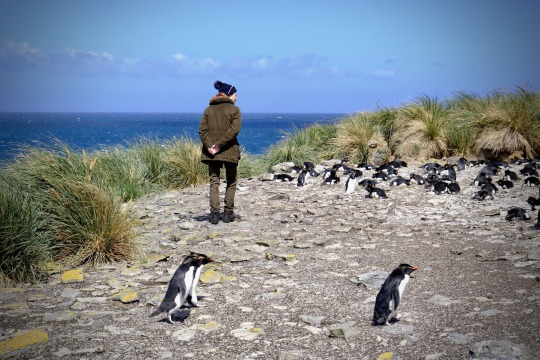
In the afternoon they visited some of the battlefield sites of the 1982 Conflict, including Mount Harriet and Two Sisters.

Day Five
Her Royal Highness, as patron of the South Georgia Heritage Trust, met representatives of the South Georgia and South Sandwich Islands Government to receive an update on the progress of the rodent eradication programme since her last visit in 2016.
The Princess then visited the Historical Dockyard Museum 1982 conflict Exhibition, followed by a walking tour of Stanley and the unveiling of a plaque to commemorate city status being granted to Stanley.

As patron of Mission to Seafarers, Her Royal Highness visited the Lighthouse Seafarer’s Mission to mark its 25th anniversary.
Next, there was a visit to the Falklands Islands Wool Company and then onto the Falklands Islands Meat company.
Her Royal Highness then planted a tree for The Queen’s Green Canopy in the 1982 Memorial Wood.



Finally, Her Royal Highness attended a Falkland Islands Government dinner to commemorate Stanley receiving City status as part of the Late Queen’s Platinum Jubilee Celebrations, and to mark the 40th Anniversary of the 1982 Conflict.
Day Six
On the final day, The Princess Royal visited the HMS SHEFFIELD Memorial on Sea Lion Island and later visited the Sea Lion Island National Nature Reserve and Bluff Cove.

©The Royal Family
#oh wow#BUSY PRINCESS#THE PICS OF HER AND TIM ARE SO CUTE#i caaaaan't#😭😭😭#couple goals#always there to support his wife#princess anne#princess royal#tim laurence#timothy laurence#brf#british royal family
39 notes
·
View notes
Text

Thank you @welcometololaland for the tag!!!
The waitress slides the cup of coffee his way and he busies himself with emptying four creams and four sugars into the steaming mug.
“Between the caffeine and sugar, how on Earth are you going to fall back asleep?” Carlos laughs.
“I probably won’t,” TK admits.
“Missing the hotel already?” Carlos asks.
A quick thought of missing you already flashes through TK’s mind for a split second and he nearly spits out his coffee. He had associated his four nights of quality sleep with the comfort of the hotel room but maybe it had more to do with Carlos’s soothing presence and their casual chats before falling asleep than he’d like to consider. His bunk feels too dull and quiet now. Carlos looks concerned while he struggles to swallow his coffee down but he’s saved from any questions by the waitress arriving with their food.
“Looks good!” TK exclaims as he immediately picks up his cheeseburger and takes a bite, effectively ending the conversation. They eat in silence for a few minutes and he tries not to think about sleeping and Carlos and sleeping with Carlos. He gazes out the window and notices the road sign indicating that they’re in San Luis Obispo. Nodding toward the sign, he notes, “I’ve been through here before.”
“You probably come through here a lot on tour, right?” Carlos asks, taking a bite of his pancakes.
“Oh, probably. That’s not what I meant though. About a year ago, when we weren’t touring, I took a couple of weeks and drove the length of the Pacific Coast Highway, staying in different cities and writing along the way. I was going through a lot and thought the drive might be healing. It was, in a way.” He looks down, picking absently at his napkin. Something about Carlos has him sharing a lot of personal stories lately but he can’t find it in himself to be too upset by it. “It was a really beautiful drive,” he adds.
“It’s a shame it’s too dark to enjoy the view this time,” Carlos notes.
“It is. I think you would’ve really appreciated the serenity of it. Maybe someday we’ll have more time,” TK says, faltering when he realizes he referred to them as “we.” He didn’t know that he even wanted them to be a we, but now that he’s pictured it—the two of them, making their way along the coast, stopping to enjoy the canyons of Malibu, the seaside cliffs of Big Sur, and the romantic white sand beaches of Carmel-By-The-Sea, on nobody’s timeline but their own—it’s hard to stop.
I feel like everyone has probably done this already but if you haven't and you want to, consider this me tagging you very enthusiastically because I love seeing what people are working on!
18 notes
·
View notes
Text
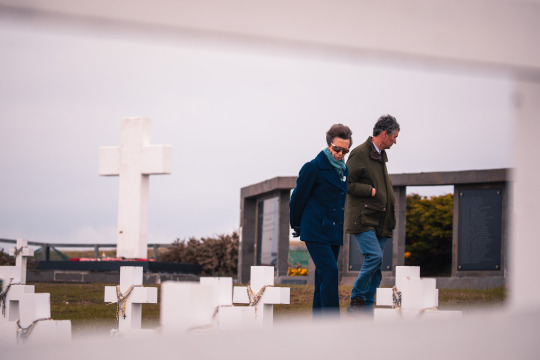
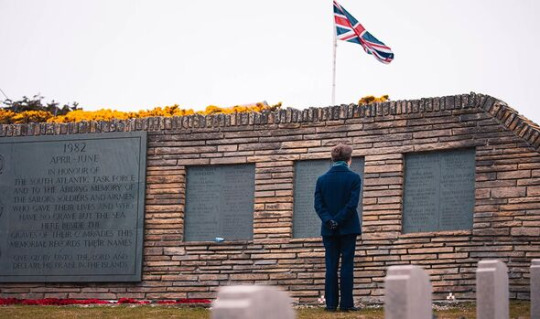

18 November 2022
On route to Goose Green Her Royal Highness visited the Col H Jones and 2 Para Memorials and the Argentine Military Cemetery near Darwin. In the afternoon The Princess visited San Carlos to pay respects at the Blue Beach military cemetery.
— The Royal Family
50 notes
·
View notes
Text
2024 Cleveland Guardians Roster
Pitchers
#24 Triston McKenzie (Palm Beach County, Florida)
#28 Tanner Bibee (Mission Viejo, California)
#29 Tim Herrin (Terre Haute, Indiana)
#31 Sam Hentges (Arden Hills, Minnesota)
#32 Gavin Williams (Fayetteville, North Carolina)
#33 Hunter Gaddis (Canton, Georgia)
#36 Cade Smith (Abbotsford, British Columbia)**
#39 Edward Lively (Gulf Breeze, Florida)*
#41 Logan Allen (Deltona, Florida)
#44 Xzavion Curry (Atlanta, Georgia)
#46 Tyler Beede (Auburn, Massachusetts)*
#48 Emmanuel Clase (Río San Juan, Dominican Republic)
#49 Eli Morgan (Rancho Palos Verdes, California)
#52 Nick Sandlin (Columbia County, Georgia)
#57 Shane Bieber (Laguna Hills, California)
#58 Scott Barlow (Santa Clarita, California)*
#59 Carlos Carrasco (Barquisimeto, Venezuela)*
#99 James Karinchak (Montgomery, New York)
Catchers
#6 David Fry (Grapevine, Texas)
#23 Noah-Gibson Naylor (Mississauga, Ontario)
#27 Austin Hedges (San Juan Capistrano, California)*
Infielders
#0 Andrés Giménez (Barquisimeto, Venezuela)
#4 Brayan Rocchio (Santiago De León De Caracas, Venezuela)
#11 José Ramírez (Baní, Dominican Republic)
#13 Gabriel Arias (La Victoria, Venezuela)
#22 Joshua-Douglas Naylor (Mississauga, Ontario)
#79 Ángel Martínez; Jr. (Santo Domingo, Dominican Republic)**
Outfielders
#2 Tyler Freeman (Rancho Cucamonga, California)
#10 Ramón Laureano; Jr. (Santo Domingo, Dominican Republic)
#17 Will Brennan (Overland Park, Kansas)
#38 Steven Kwan (Fremont, California)
#90 Estevan Florial (Santo Domingo, Dominican Republic)*
Coaches
Manager Stephen Vogt (Visalia, California)
Bench coach Craig Albernaz (Somerset, Massachusetts)
Hitting coach Chris Valaika (Santa Clarita, California)
Assistant hitting coach Juan Puente (Galesburg, Illinois)
Assistant hitting coach Josh Tubbs (Nashville, Tennessee)
Assistant hitting coach Joe Torres (Kissimmee, Florida)
Pitching coach Carl Willis (Yanceyville, North Carolina)
Bullpen coach Brad Goldberg (Beachwood, Ohio)
Bullpen catcher Armando Camacaro (Santiago De León De Caracas)
Bullpen catcher Ricky Pacione (Newburgh, New York)
Outfield coach J.T. Maguire (Harford County, Maryland)
1B/catching coach Santos Alomar; Jr. (Ciudad Salinas, Puerto Rico)
3B/infield coach Rouglas Odor (Maracaibo, Venezuela)
Field coordinator Kai Correa (Hawaii County, Hawaii)
Assistant coach Jason Esposito (Bethany, Connecticut)
Assistant coach Agustin Rivero (New York, New York)
#Sports#Baseball#MLB#Cleveland Guardians#Celebrities#Florida#Venezuela#Massachusetts#Georgia#Indiana#Canada#British Columbia#Dominican Republic#Minnesota#North Carolina#New York#Texas#Ontario#Kansas#Connecticut#Maryland#Illinois#New York City#Tennessee#Puerto Rico#Hawaii#Ohio#Awesome
1 note
·
View note
Text
Interior designer Jade Janks was found guilty Wednesday of drugging and strangling her former stepdad after finding naked pictures of herself on his computer.
Janks, 39, was convicted of the first-degree murder of Thomas Merriman after the Vista, Calif., jury deliberated for less than one day.
She maintained her innocence throughout the trial, insisting she did not kill Merriman, 64, on December 31, 2020 — and instead claiming he died of an illness.
Janks did admit she was horrified to find more than 100 nude pictures of herself on his computer, the San Diego Union-Tribune reported.
“This was no accident,” Deputy District Attorney Jorge Del Portillo told jurors in the North County Superior Court. “This was murder by design.”
The photos had been taken by Janks consensually with her then-boyfriend more than a decade ago, according to local reports. It was unclear how Merriman, a local butterfly activist, gained access to the private pictures. One of the nude photos was apparently his screensaver.
Prosecutors told the jury that Janks, of Solana Beach, discovered the pictures while cleaning Merriman’s apartment after he had been hospitalized. Her mother was no longer married to him, but the two were still close.
The lawyers also presented text messages to the jury that Janks wrote saying she “dosed the hell out of him” after picking him up from the hospital.
“I am about to club him on the head as he is waking up,” she texted as he woke up. She confessed to two separate people that she killed him, they said.
Janks’ lawyer Marc Carlos spoke to the media after the verdict, insisting there was “zero” evidence she strangled him.
Merriman’s cause of death was determined to be acute intoxication of zolpidem, also known as the sleep aid Ambien. He was found dead under a pile of cardboard boxes in his driveway on Jan. 2, 2021.
During the trial, Carlos made sure to criticize Merriman’s behavior.
“Jade Janks loved her stepfather,” he said. “Tom Merriman loved Jade Janks. Unfortunately, Tom Merriman was a troubled individual, and he loved her in different ways.”
14 notes
·
View notes
Text

Inés Laffón, the most unknown WAG of Real Madrid.
“What I love most about Álvaro is his humility, his loyalty and, above all, his nobility with his people. We live a very quiet life surrounded by our family and friends like anyone else.”
Six kilometers from the cinematographic city of Deauville and very close to the beaches where the historic Normandy landings took place is the "Haras du Quesnay". This magnificent 180-hectare estate is famous for one of the most prestigious Thoroughbred stud farms in the world and a castle that has nothing to envy to those from fairy tales. The castle and everything that surrounds it was built in 1907 by William Kissam Vanderbilt, an American investor who wanted to establish a stud farm in France. After his death in 1920, another American, Arthur Kingsley Macomber, resumed the task, which in 1958 passed to the ancestors of our hostess: Inés Laffón. Inés was born and raised in France and currently lives in Madrid with her life partner, Álvaro Odriozola, a Real Madrid defender. The footballer from San Sebastian is also passionate about racehorses, in fact he owns the horse Cuadra Bernardo, which he named after his late grandfather, from whom he inherited his love for horses.
Inés belongs to a well-known Sevillian family — she is the first cousin of Rocío Laffón, "Rochi", very popular for her friendship with Victoria de Marichalar. "I have a very peculiar mix of nationalities. My father's (Carlos Laffón Parias) family is from Seville, but he grew up in Madrid. My mother, Patricia Lomba Head, was also born in Madrid: her father is from Madrid, but her mother is French. The funny thing is that my great-grandfather is English and my great-grandmother is Belgian" - tells us the young woman, linked to the equestrian world also by both branches of her family. "The world of horses brought my parents together. My father always wanted to be a horse trainer and started as a "gentleman rider" (amateur horse racer) in Madrid where he met my mother. Fortunately, my grandmother, the first horse trainer, lived in France and gave him the opportunity to work with her to learn the trade. That's how my father became a coach in Paris and from that union me and my siblings were born".
Inés, since when has this property belonged to your family?
My great-grandfather Alec Head, his brother and father bought Quesnay in 1958 after the war. His father, when he saw the size and reconstruction that the war required, told him it was madness and that it would ruin them. But, after a year of works, conditioning, good investment and, above all, the talent of my great-grandfather, in 1959, they brought the first stallion to the farm. My great-grandfather had a vision and pioneered the purchase of American blood at horse auctions in the United States - he is considered one of the greatest French breeders of all time. He created a cabalistic empire out of nothing thanks to his talent, vision, and connection to racehorses.
You mentioned World War II. How did occupancy affect the property?
Deauville is very close to the beaches where, almost at the end of the Second World War, the famous landing in Normandy took place, and the stud farm played a very important role in the conflict, as it became the hideout of the Nazi high command. The German army took the castle and it was the headquarters of the 711th Infantry Division, commanded by Lieutenant General Josef Reichert and General Erwin Rommel. They painted it green and conveniently camouflaged it so it wouldn't be seen by planes. The one hundred and ten "boxes" currently housing broodmares and newborn foals were cells for Nazi prisoners during the war.
It makes a huge impression.
Yes, my great-grandfather and his family traded blueprints, guns, and helmets for books, sales catalogs, and whatever else it takes to grow a racehorse.
What memories do you have of your childhood here?
It's a very special place because my family lives all over the world and "Quesnay" has always been where my great-grandparents used to gather us all to spend our holidays together. The best part was getting on my great-grandfather's tractor and driving from meadow to meadow, watching horses and cows and listening to him talk about them with such passion. Besides, all my cousins and I rode ponies and ran all over the stud, trotting and galloping non-stop. Those are priceless memories and it's something I'll never forget.
Do you often come to this house?
When I lived in France, I often came here on weekends, and between July and October we spent longer periods here. When I moved to Madrid, I came a little less often, but now that my boyfriend shares my passion for horses, we try to come whenever he has a few days off.
I imagine Álvaro is always happy to come with you to this place.
Álvaro has a great passion and love for horses that is very difficult to explain. He is in love with the horse as an animal and racing in particular. When he comes here, he says he's coming to Disneyland Horse... Imagine how much this place means to us, it's just magical. Here all the pressure he has during the season disappears and we gain a lot of strength.
How did you meet? Like your parents, did the horse world connect you both?
Our story is peculiar and very funny. As Álvaro is passionate about horse racing, he spends most of his free time traveling and watching races in France, England and Ireland. Every year, on the first weekend of October, Paris hosts the most important race in the world - the Arc de Triomphe Prize, bringing together the best thoroughbreds in the world. And of course, how could it be otherwise, Álvaro was there with his family and I was there because usually my father always has one or two runners a day. Apparently, Álvaro noticed me that day, and it so happened that the day after the incident, Álvaro went to visit my father's stables in Chantilly with a mutual friend. Realizing that I was working in Madrid, two days later they organized a dinner where I met Álvaro for the first time. I didn't even know who he was, but blessed passion for horses that brought us together!
Do you like football? Are you a fan of any team?
The truth is that before I met Alvaro, I knew absolutely nothing about football, but living with him every day, I liked it and learned more and more until I realized that it is a great sport. I've really liked every club Álvaro has been to in recent years: Real Madrid, Bayern Munich and Fiorentina, and I'm a fan of the team he's at.
As you say, last year in Florence, now in Madrid, next year, who knows... Does your job allow you to follow Álvaro wherever football takes him?
Since I met Álvaro, we have lived in Munich, Florence and Madrid. I was able to go to Munich because it was the beginning of the pandemic and the offices were closed. The result was an online job that allowed me to follow him everywhere, returning to Madrid from time to time to fulfill my professional commitments. Living abroad is a very enriching aspect of football: it brings us together and allows us to meet great people.
What is your favorite area of the castle?
My favorite part of the house is the living room. There is nothing I like more than a family evening or playing cards after dinner by the firelight. It is also the place where my great-grandfather and then my grandmother prepared crossbreeds, which stallion to combine with which mare to try to breed the fastest horse... It was very interesting for us to listen to them. From the outside, I run a stable where the mothers of the mares and their foals stay, I love to walk there and bring carrots to the foals. But if I had to choose a place from the entire stud, I would choose the little chapel, which is located at the end of the garden and is unique for the whole family.
What is your favorite plan when you are here?
Meeting the family, having a good conversation by the fire, running in the morning in the meadows, playing cards... But without a doubt my favorite, if I'm here during the birthing season, which is from January to May, is to see the birth of a foal with the hope that it will be a champion. The first hours of a horse's life seem amazing to me.
What are the must-see places in this area of France for you?
Deauville is a very charming city where I love to walk. During the film festival, along the endless beach there are booths with the names of all the actors, which is very original. Twenty minutes away is Honfleur, a seaside town with a very interesting historical and artistic heritage that inspired Monet and Courbet, among others. And of course flower market. Landing beaches, memorials and American cemeteries are also worth seeing.
Tell us about yourself, what do you do?
As I mentioned, I was born and raised in France, but I always wanted to go to Spain, so after finishing my studies I was looking for a job in Madrid and for seven years I have been working at BDO, in "financial consulting", and more specifically in business valuation.
Apart from horses, what are your hobbies?
I love spending time with my family and with Álvaro. I like traveling, getting to know different places and cultures, it enriches me a lot. Since I was little I loved watching people cook at home and now I really enjoy cooking and hosting people at home. I love jewelry and have always wanted to do a gemology course. This will be my next hobby!
Are you very close to your cousin Rocío?
We are like sisters. Although I lived in France, we always spent a lot of time together and since I came to Madrid we do everything together. We have many things in common, we know each other very well, we love traveling and horses. Rochi is pure energy and joy and I count on her in everything.
Another great horsewoman is Victoria de Marichalar, a close friend of your cousin. Did she ever have the opportunity to accompany you to the castle?
Victoria is like part of the family. We take many trips together and we love escaping to this house. Although hers was jumping, she loves the world of horse racing and, whether in Madrid or Paris, we really enjoy the equestrian plans.
What is it like to share your life with a football star?
I love being able to be by his side while he fulfills dreams. Living from your passion is a great luck and Álvaro has worked a lot to get where he is. On the one hand, it’s a dream life, but on the other, it also entails many sacrifices, both on his part and on mine. From one day to the next you can go to another country, there are no weekends or holidays... but Álvaro makes everything much easier. What I love most about him is his humility, his loyalty and, above all, his nobility with his people. We live a very quiet life surrounded by our family and friends like anyone else.
Would it be a dream for you to get married in this castle?
Of course. This house is the realization of my great-grandfather's vision, where my grandparents and my parents got married. This is my place of peace and happiness with Álvaro. Getting married here would be a dream.
12 notes
·
View notes
Text
(012) Die drei ??? und der seltsame Wecker

Klappentext
Es gibt Wecker, die klingeln, Wecker, die schnarren, Wecker, die Musik ertönen lassen oder einen mit Glöckchengeläut aus dem Schlaf holen. Einen Wecker aber, der einen furchterregend schrillen Schrei ausstößt, haben Justus, Bob und Peter noch nie erlebt. Und ein solches Unding haben sie soeben auf dem Schrottplatz aufgestöbert! Kein Wunder, dass diese seltsame Konstruktion die Neugier und die Phantasie der drei Detektive anstachelt: Wer hat einen solchen Wecker gebaut und warum? Als sie das herauszufinden versuchen, geraten sie unversehens auf die Spur eines raffinierten Kunstraubes. Doch ehe sie ihn aufklären können, gibt es manche harte Rätselnuss zu knacken ...
Veröffentlichungshistorie
Buch (Random House): 009, 1968, Robert Arthur, The Mystery of the Screaming Clock
Buch (Kosmos): 004, 1970, Leonore Puschert (aus dem Amerikanischen übertragen)
Hörspiel (Europa): 012, 1980
⁉️ Allgemein
Handlungsort
Rocky Beach
Kategorie
Diebstahl, Schatzsuche, Rätsel
Figuren
Justus Jonas
Peter Shaw
Bob Andrews
Mr. Morton, Chauffeur
Mr. A. Felix, Uhrmachermeister, Spezialität Sonderanfertigungen
Mrs. Smith, Harrys Mutter
Harry Smith
Mr. Jenkins
Alfred Hitchcock
Mrs. King
Miss Julie Taylor
Martha Harris
Gerald Cramer (😈)
Gerald Watson, Radiohörspielsprecher, spielte den Detektiv bei „Schrei um Mitternacht“
Mr. Victor Hugenay (😈)
Carlos (😈)
Hauptkommissar Reynolds
🏖 Rocky Beach Universum
Orte
Seitenstraße vom Hollywood Boulevard
Franklin Street 309
San Francisco, da haben die Smiths vorher gewohnt
Einrichtungen
Schrottplatz
Zentrale
Sonstiges
Mr. Bert Hadley / Mr. Clock, Profi im Schreien, Radiohörspielsprecher
🛼 Sonstiges
Lustige Dialoge
Peter: „Bob, kapiert?“
Bob: „Natürlich“
Harry: „Ja das war er! Das war sein Todesschrei!“
Peter: „Habt ihr gehört? Die haben einen umgebracht und müssen ihn jetzt begraben!“
Justus: „Ich hab’ da eine Idee … aber lassen wir das.“
Justus: „Hier ist ein Zettel mit Zahlen.“
Gerald Cramer: „Her damit! So … Lauter Zahlen.“
Peter: „Man! Wir haben es! Wir haben es!“
Justus: „Es gibt noch zwei andere Botschaften zu knacken, Leute.“
Peter: „Oh verdammt, das hätte ich fast vergessen …“
Peter: „Mit den Zahlenreihe können wir überhaupt nichts anfangen. Na, mir passt es ganz gut, denn ich muss jetzt sofort nach Hause.“
[…]
*Telefon klingelt, Verstärker wurde eingeschaltet*
Justus: "Willst du denn nicht hören, wer es ist?"
Peter: „Das wirst du mir morgen schon erzählen, Tschüss!“
Justus: „Das ist ja Mr. Hugenay!“
Mr. Hugenay: „In der Tat! Aber mit Maschinenpistole!“
Phrasenschwein
Aufgelegt!
Der Anrufer legt einfach auf und das wir kommentiert!
Lass aufgeben!
Peter will aufgeben
Mitgehört!
Verstärker wird eingeschaltet
🏳️🌈 Queer/diversity read
Shippy moments
-
Diversity, Political Correctness and Feminism
-
#die drei fragezeichen#und der seltsame wecker#folge 012#012#diebstahl#schatzsuche#rätsel#rocky beach#mitgehört#lass aufgeben#aufgelegt#Robert Arthur
19 notes
·
View notes
Text



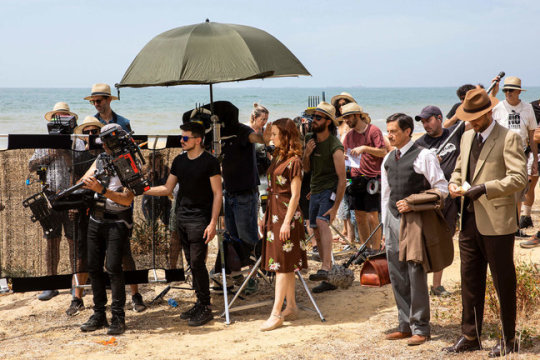
New upcoming period drama: Operación Barrio Inglés
Co-produced by RTVE with Onza (El Ministerio del Tiempo, Parot, Hernán) and the Andalusian production company Emociona Media, filming begins for Operación Barrio Inglés, a new intrigue drama for the TV channel La 1.
Spies, Nazis, British and a risky love story set in Huelva in 1940, a city where the conflicts of World War II are reproduced on a smaller scale.
Synopsis
World War II has just broken out.
Although Spain is "neutral" under Franco's dictatorship, Huelva is a strategic enclave to control the ships of both sides that cross the strait. In addition, it has an important British colony. For this reason, the Germans send members of the Secret Service to control what happens in the city, especially in the mines in the province of Huelva, owned by the English, and which provide Great Britain with ore for weapons and artillery.
In this way, Huelva becomes a veritable nest of spies from both sides, among whom the young Lucía is forced to move. She has just turned 25 and has been hired by an English mining company to work in their offices as a secretary.
There she meets the company's manager, Peter, an attractive Englishman with a dark past who drags Lucía into an adventure in which she will be forced to take sides. When you're in the middle of a war, being neutral is not an option.
Data Sheet
Executive Producer: Gonzalo Crespo Gil, José María Irisarri, Pilar Crespo, Gonzalo Sagardía, Clara Almagro, Santiago de la Rica
RTVE executive production: Borja Gálvez
Production Director: Onil Ganguly Directed by: Chiqui Carabante José Ramón Ayerra
Plot direction: Manuel Ríos San Martín Screenwriters: Manuel Ríos San Martín, Victoria Dal Vera, José Ortuño, Virginia Yagüe, Pablo Tobías and Tatiana Rodríguez
Photo Direction: Dani Salo (A.E.C.) and Alejandro Espadero (A.E.C.)
Art Direction: Hector Bertrand
Casting Direction: Juana Martínez
Music: Pablo Cervantes
Wardrobe: Matías Martini
Makeup and hairdressing: Anabel Beato
Cast
The series will star Aria Bedmar (Lucía), Peter Vives (Peter) and Rubén Cortada (Francisco).
The cast is completed by Paco Tous (José), Juan Gea (Enrique), Bea Arjona (Amparo), María Morales (Cinta), Chiqui Fernández (Rocío), Kimberley Tell (Agatha), Aida Ballmann (Miss Eva), Silvia Hanneman (Hanna), Yan Tual (Victor), Sue Flack (Miss Parker), Marco Cáceres (Juan), Almagro San Miguel (Toni), Carla Nieto (Sylvia), Ángela Chica (Belén), Clara Navarro (Rebeca), Fran Cantos (Oskar), Stefan Weinert (Schneider), Kevin Brand (Kurt), Frank Feys (Edward), Craig Stevenson (Goodwill), Edu Rejón (Gianni), Gregor Acuña (Dieter), José Luis Rasero (Civil Guard Captain), Gonzalo Trujillo (German Consul), Ken Appledorn (English ambassador) and Carlos Olalla (Father Damián), among others.
Filming
Operation Barrio Inglés will have as its settings the old dock of the English mining company and the area of Tinto River and its open-pit mines, as well as the Bellavista neighborhood in the town of Minas de Riotinto, the port of Punta Umbría and the Mazagón beach in Huelva. In Sevilla, among other locations, it will be shot at the Monsalves Palace, and in other areas of the city and province, and also in different parts of Jerez de la Frontera.
About the mines and their location:



This is the Tinto river, its waters are red due to the high concentration of sulfur and iron oxides in the land (it happens the same with the red lagoon of Mazarrón's mines, Murcia), although it's duscussed if the mining activity has been increasing this characteristic, its water are very acid and are poluted with heavy metals.
The Tinto river (ancient name: Luxia) starts its flow in the Aracena Mountain Range and after 100 km joins the Odiel river (ancient name: Urium) at the height of the city of Huelva.
The mines have been exploited since pre-roman era, by Iberians and Tartessians, to obtein iron, copper, magnesium, silver and gold, which improved trading with the Phoenician, Carthaginian, and Greek colonies that were near to this site (in fact, the city of Huelva was founded by Phoenicians, and it was called Onuba), and eventually the Carthaginians took control of the mines after their expansion throughthe Iberian peninsula. Later, it became one of the most important mining areas of the Roman Empire.
By end of the 19th century, due to económico crisis the Spanish government sold several mines to English Companies, and one of them was the Riotinto mines, who were bought by the Rio Tinto Company Limited (RTC) in 1873, as they were looking for metals that were very demanded in the country due to its high industrialization (in contrast, in Spain the industrialization was scarce and the two main regions in which it was developed were Catalonia and Basque Country)
The RTC was the builder and owner of the railway line that connected the mines with the port of Huelva, where it built a mineral dock to facilitate the unloading and transport of the extracted material by sea to England.
In Riotinto, the luxurious and exclusive neighborhood of Bellavista was built for English personnel, it was a Victorian-style neighborhood that was endowed with tennis courts, golf courses, its own cemetery, a Social Club or even a Presbyterian church.
Huelva capital will also develop under the English influence. The numerous workshops and facilities built by the RTC that gave work to more than seven hundred workers, such as the railway station, changed the appearance of the city and contrasted with the rise of a new bourgeoisie of both Spaniards and foreigners who found themselves linked to the company. The power of the company became such in the city that civil buildings depended on the interests of the company.
Proof of this are the Reina Victoria neighborhood, as a garden city that welcomed part of its employees; the construction of Casa Colón, which ended up becoming the headquarters for the company's offices; the disappeared English Hospital; or the gigantic mineral pier located on the Odiel River. The English population introduced football, being the Huelva Football Club the first football team in Spain, founded in 1889.
In Punta Umbría, the British managers of the Rio Tinto Company Limited (RTC) erected rest areas for their employees. Since 1883 some constructions were carried out in the area, in wood and of the bungalow type, but it would not be until 1896 when the RTC was granted the possibility of establishing houses in this area, to which many RTC employees and their families went in summer to the beach through the Riotinto railway.
In 1943, the corpse of Glyndwr Michael, a Welsh homeless, disguised as a British Marine oficer called William Martin with information about a fake plan of the Allies to attack Greece was found drowned near the coast of Huelva, in Punta Umbría. This was part of the Operation Mincemeat to distract the Nazis and attack Sicily instead. Operation Mincemeat was a important plot in episode 3×02, Tiempo de Espías, from El Ministerio del tiempo. Well, although in the episode the original Operation is cancelled and a character named William Martin later takes the place of the original "William Martin", so the Operation success.
Years later, in 1954 the Riotinto mines returned to national property, under the CEMRT (Compañía Española de Minas de Río Tinto)
#operación barrio inglés#aria bedmar#peter vives#rubén cortada#paco tous#juan gea#bea arjona#maría morales#chiqui fernández#kimberley tell#aida ballmann#silvia hanneman#yan tual#sue flack#marco cáceres#almagro san miguel#ángela chica#clara navarro#fran cantos#stefan weinert#kevin brand#frank feys#craig stevenson#period dramas#upcoming series#carla nieto#edu rejón#gregor acuña#jose luis rasero#gonzalo trujillo
4 notes
·
View notes
Text
San Carlos Condo For Sale Gulf Shores Beach Vacation Rentals
#Beach #RealEstate Condos – Vacation Rentals
San Carlos Condo For Sale, Gulf Shores Beach Vacation Rentals
San Carlos Condo For Sale, Gulf Shores Beach Vacation Rentals
Via: Beach Realty https://www.beachrealty.net/2023/06/san-carlos-condo-sales-gulf-shores-vacation-rentals.html
Forecast: Weather
Beach Real Estate Sales-Rentals
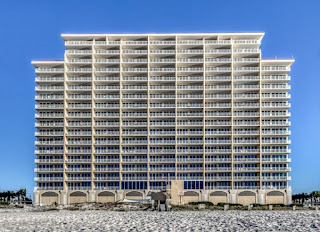
View On WordPress
3 notes
·
View notes